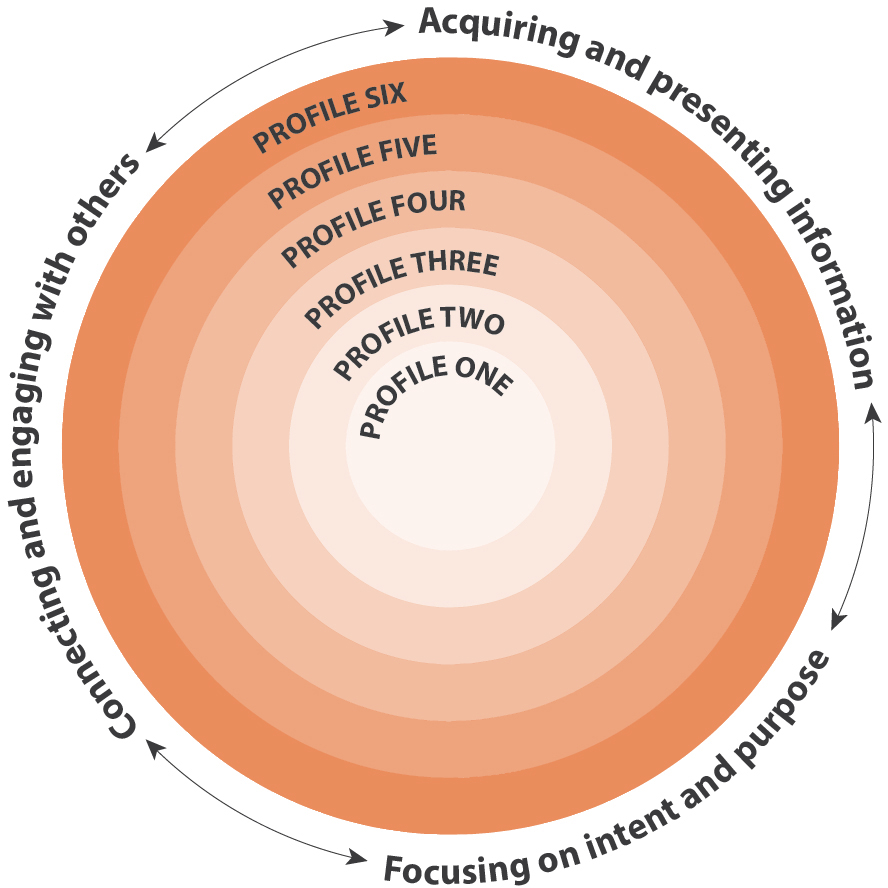| Un projet UNIS Bien-être pour lutter contre les changements climatiques |
Les élèves conçoivent des projets de service communautaire liés aux changements climatiques dans le cadre d’un projet UNIS Bien-être.
|
La collaboration, Conscience de soi et responsabilité personnelle, Conscience et responsabilité sociales |
| Rédaction d’une constitution de classe |
Les élèves entreprennent la rédaction d’une constitution de classe et collaborent à la fois au plan et au produit.
|
La collaboration |
| Aménagement d’habitats pour les animaux |
Les élèves utilisent le matériel de classe pour concevoir des habitats qui procurent aux animaux ce dont ils ont besoin pour survivre. |
La collaboration, L'interaction, Pensée critique et réflexive |
| Organisation d’une Journée du chandail orange |
Une élève, inspirée par un roman sur l’expérience d’une jeune fille dans un pensionnat indien, rassemble de plus amples renseignements et, quatre ans plus tard, organise une Journée du chandail orange dans son école.
|
La collaboration, Pensée critique et réflexive, Conscience et responsabilité sociales |
| Fabrication de chaussures en papier journal |
Les élèves travaillent en petits groupes pour fabriquer des chaussures avec du papier journal.
|
La collaboration |
| Chaînes de dominos |
Quelques élèves commencent à faire des chaînes de dominos, ce qui déclenche une activité de classe.
|
La collaboration |
| Élaboration de règles de base pour des cercles de lecture |
Les élèves réfléchissent sur leurs expériences antérieures de collaboration afin d’élaborer des règles de base qu’ils pourront utiliser dans le cadre de cercles de lecture pour l’étude de romans. |
La collaboration |
| Apprendre à de jeunes élèves à utiliser une application |
Des élèves apprennent à des camarades plus jeunes comment utiliser une application pour représenter leurs apprentissages.
|
La collaboration |
| Porter bien haut le flambeau |
Après avoir rencontré d’anciens combattants lors d’un événement du jour du Souvenir, un élève forme un groupe consacré aux liens intergénérationnels entre élèves et anciens combattants.
|
La collaboration, Pensée critique et réflexive, Conscience et responsabilité sociales |
| Écriture collaborative |
Les élèves travaillent en petits groupes pour écrire une histoire à propos d’un animal.
|
La collaboration |
| Handprint Turkeys |
A student teaches her classmates now to make handprint turkeys.
|
Communicating, Collaborating |
| Save Fred: Collaborative Problem-solving |
Students work in groups on a problem-solving challenge called “Save Fred”.
|
Collaborating, Critical and Reflective Thinking |
| Making a Hockey Rink |
Students make a hockey rink with whiteboards.
|
Collaborating, Critical and Reflective Thinking |
| Reflecting on a Musical Performance |
A student reflects on her performance singing a duet.
|
Collaborating, Communicating, Critical and Reflective Thinking |
| Addressing Climate Change Through a WE Wellbeing project |
Students design community service projects related to climate change as part of a WE Wellbeing project.
|
Collaborating, Personal Awareness and Responsibility, Social Awareness and Responsibility |
| You Mud? |
Two children sit together and observe each other as they spread mud on an outdoor table.
|
Collaborating, Social Awareness and Responsibility |
| Exploring Factors that Effect Motion |
Students collaboratively create ramps to explore the forces that effect motion.
|
Collaborating, Communicating, Critical and Reflective Thinking |
| Designing Animal Habitats |
Students use classroom materials to design models of animal habitats that provide animals with what they need to survive.
|
Collaborating, Communicating, Critical and Reflective Thinking |
| Making Newspaper Shoes |
Students work in small groups to make newspaper shoes.
|
Collaborating |
| Domino chains |
A few students start making domino chains and spark a class activity.
|
Collaborating |
| Teaching Younger Students How to Use an App |
Older students teach younger students how to use an app to represent their learning.
|
Collaborating |
| What We Want in a Playground |
Students work in pairs to discuss and build their ideal playground using classroom materials.
|
Collaborating |
| Developing Ground Rules for Literature Circles |
Students reflect on their previous experiences with collaboration in order to develop ground rules to use in novel study Literature Circles.
|
Collaborating |
| Developing a Classroom Constitution |
Students initiate the development of a Classroom Constitution and collaborate on both the plan and the product.
|
Collaborating |
| A Compromise |
When two children’s ideas about an imaginative story diverge, one of the children finds a compromise.
|
Collaborating, Social Awareness and Responsibility |
| Junior Fire Crew |
First Nations students reflect on the collaborative aspects of working on a fire crew.
|
Collaborating |
| Collaborative Writing |
Students work in small groups to write a story about an animal.
|
Collaborating |
| Organizing an Orange Shirt Day |
A student, inspired by a novel about a girl’s residential school experience, gathers further information and, four years later, organizes an Orange Shirt Day at her school.
|
Collaborating, Critical and Reflective Thinking, Social Awareness and Responsibility |
| Hold High the Torch |
After meeting veterans at a Remembrance Day event, a student forms a group dedicated to intergenerational connections between students and veterans.
|
Collaborating, Critical and Reflective Thinking, Social Awareness and Responsibility |
